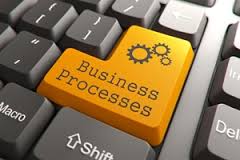 Every company wants its business software (or ERP system) to support the way their underlying business works. It only makes sense, and with today’s business systems, that capability is actually within reach.
Every company wants its business software (or ERP system) to support the way their underlying business works. It only makes sense, and with today’s business systems, that capability is actually within reach.
We remember 20 or 30 years ago when merely implementing the “accounting” portion of a client’s business was a long and tedious undertaking, and usually subject to some pretty rigid software rules dependent on how your particular accounting software was written. Then again, that wasn’t that big of a problem since by definition accounting systems should conform to generally accepted accounting principles – and those were generally incorporated, at least in basic form, in most systems.
But today, we’ve gone way, way beyond mere accounting. Today’s ERP applications are comprised (or can be) of a broad range of applications affecting nearly all areas of the business. These include human resources (beyond just payroll), most phases of production and process control, all the accounting of course, as well as webstore interaction, electronic data interchange with trading partners, bar-coded freight systems and complete warehouse management for picking, packing, license-plating, receiving, putaway and shipping.
In today’s world, the only way to ensure that your software is going to match your processes is to reengineer them before you do your software selection. Job one is to optimize those processes – enlisting the aid of what is usually an outside process expert or lean consultant – to ensure that everything you’re doing in the business has been optimized for efficiency, removal of obstacles and redundancies, and shared internally to ensure that all parties can eventually have access to the same process ‘picture’ – and the same data silos — where required.
To do all that, you need to order your processes first, and then think about the software you’ll use to bake those into your company’s mode of operation. As the folks at Panorama Consulting note in a recent article:
Business process reengineering also ensures your chosen ERP software aligns with your long-term organizational goals. ERP systems are a big investment, so they should support your processes for at least the next five to ten years.
Most importantly, business process reengineering helps you beat the competition by ensuring your ERP system enables differentiated, efficient business processes.
In our following post, we’ll share what they had to say about 7 process reengineering tips that are designed to give your company a competitive advantage. Stay tuned…
